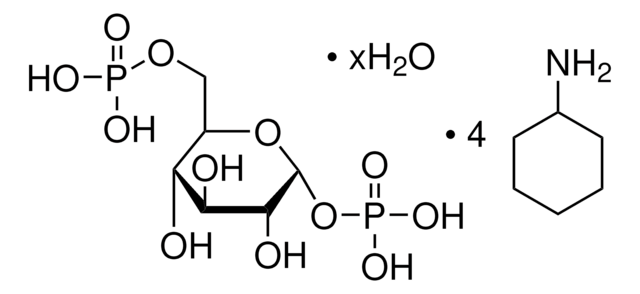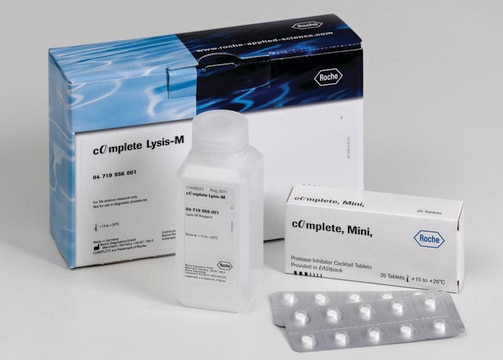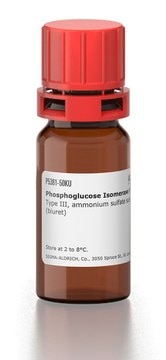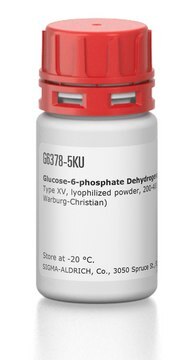P2621
Phosphomannose Isomerase from Escherichia coli
recombinant, expressed in E. coli, ammonium sulfate suspension, ≥50 units/mg protein
Synonym(s):
D-Mannose-6-phosphate ketol-isomerase, Mannose Phosphate Isomerase, PMI
About This Item
Recommended Products
recombinant
expressed in E. coli
Quality Level
form
ammonium sulfate suspension
specific activity
≥50 units/mg protein
storage temp.
2-8°C
Application
Biochem/physiol Actions
Packaging
Unit Definition
Physical form
Storage Class Code
12 - Non Combustible Liquids
WGK
WGK 1
Flash Point(F)
Not applicable
Flash Point(C)
Not applicable
Personal Protective Equipment
Regulatory Listings
Regulatory Listings are mainly provided for chemical products. Only limited information can be provided here for non-chemical products. No entry means none of the components are listed. It is the user’s obligation to ensure the safe and legal use of the product.
EU REACH Annex XVII (Restriction List)
Certificates of Analysis (COA)
Search for Certificates of Analysis (COA) by entering the products Lot/Batch Number. Lot and Batch Numbers can be found on a product’s label following the words ‘Lot’ or ‘Batch’.
Already Own This Product?
Find documentation for the products that you have recently purchased in the Document Library.
Articles
Instructions for working with enzymes supplied as ammonium sulfate suspensions
Our team of scientists has experience in all areas of research including Life Science, Material Science, Chemical Synthesis, Chromatography, Analytical and many others.
Contact Technical Service







